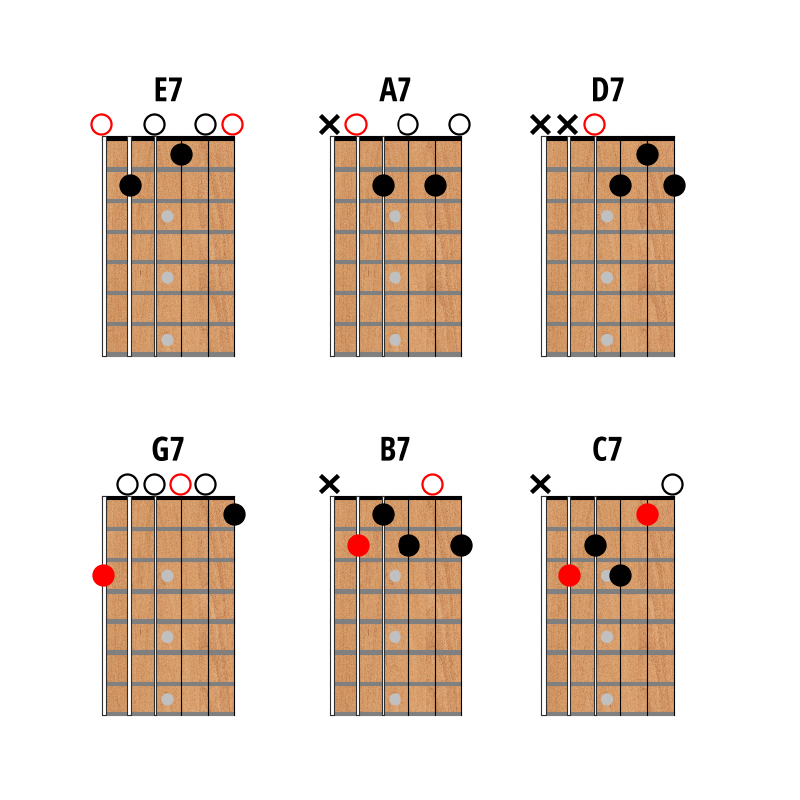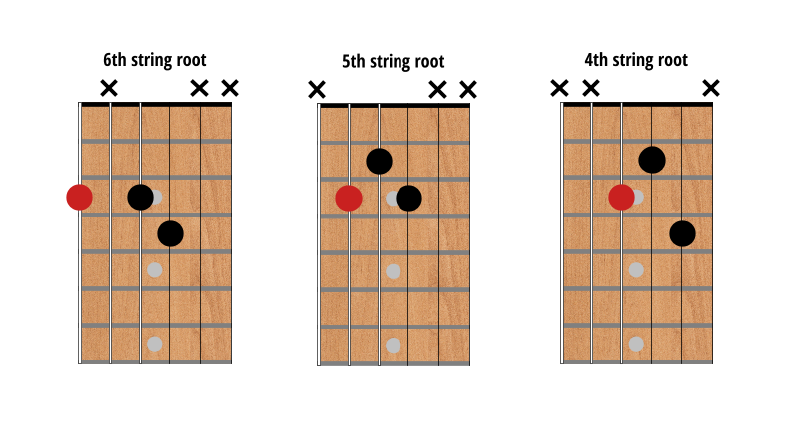Blues basics
Keeping your place without losing the groove
Ah, the blues. Pretty much every musical style owes something to the blues: rock, soul, jazz, country.
I remember consciously thinking at one point:
“I’m just a beginner, so I’ll focus almost exclusively on the Blues. The blues are easy: just three chords!”
Wrong, wrong, wrong. For the record: the Blues are anything but easy in any sense. And I’m not just talking about technique, groove, and authenticity.
Sure the Blues comprises a “simple” three-chord I-IV-V progression, most often over a 12-bar form like this:
I7 / % / % / %
IV7 / % / I7 / %
V7 / IV7 / I7 / %
But so much else gets complicated:
It fluidly mixes between major and minor tonality. It’s common to play minor scales over major chords with the blues. In fact the major/minor interplay is almost synonymous with the sound.
It’s often extremely complex harmonically. Chord substitutions abound: secondary dominants, tritone substitutions, every trick in the book.
Normal diatonic theory would say the I and IV chords should be Maj7 chords, not Dom7. Answering “why?” the blues uses Dom7 chords is unbelievably complex. See this blog article for example (though it’s way over my head).
Things really get interesting when people like Brian Wilson or Ornette Coleman get involved.
I’ll try to keep things as simple as possible, but the Blues ain’t easy.
The Blues uses Dom7 chord voicings almost exclusively. It’s useful to have a few basic Dom7 shapes under your fingers before you start this chapter. All of the shapes below are quite easy to play, especially the shell voicings.
First learn the E7, A7, D7, G7, B7 and C7 shapes in open position. Note that the lowest note in all of these shapes is the root.

Fig 1. Dom7 shapes in open position
These six shapes will allow you to play the I7-IV7-V7 Blues progression in any of the “guitar” keys:
«E Major»: E7, A7, and B7.
«A Major»: A7, D7, and E7.
«D Major»: D7, G7, and A7.
«G Major»: G7, C7, and D7.
Next learn these three “shell” voicings. They will allow you to play in any key, simply by choosing different root note locations on the fretboard.
These shell voicings leave out the P5. They are almost like triads, but with the root, M3, and m7 instead of the root, M3, and P5. It’s often useful to leave out one note or another when you are trying to find a comfortable fingering for a chord.
It’s almost always okay to leave out the P5 from any chord. The P5 is like MSG for the root note, it just makes the root sound meatier. Leaving it out doesn’t affect the quality or overall nature of the chord.

Fig 1. Dom7 shell voicings
Note that the sixth-string rooted shape mutes the fifth string. It’s actually easier to mute than not: just let your index finger on the root note flop over a bit and prevent the fifth string from ringing. All three shapes should prove quite easy to play (with just three fingers!).
Keeping your place without losing the groove
Introducing the minor pentatonic scale
Same notes, different sounds